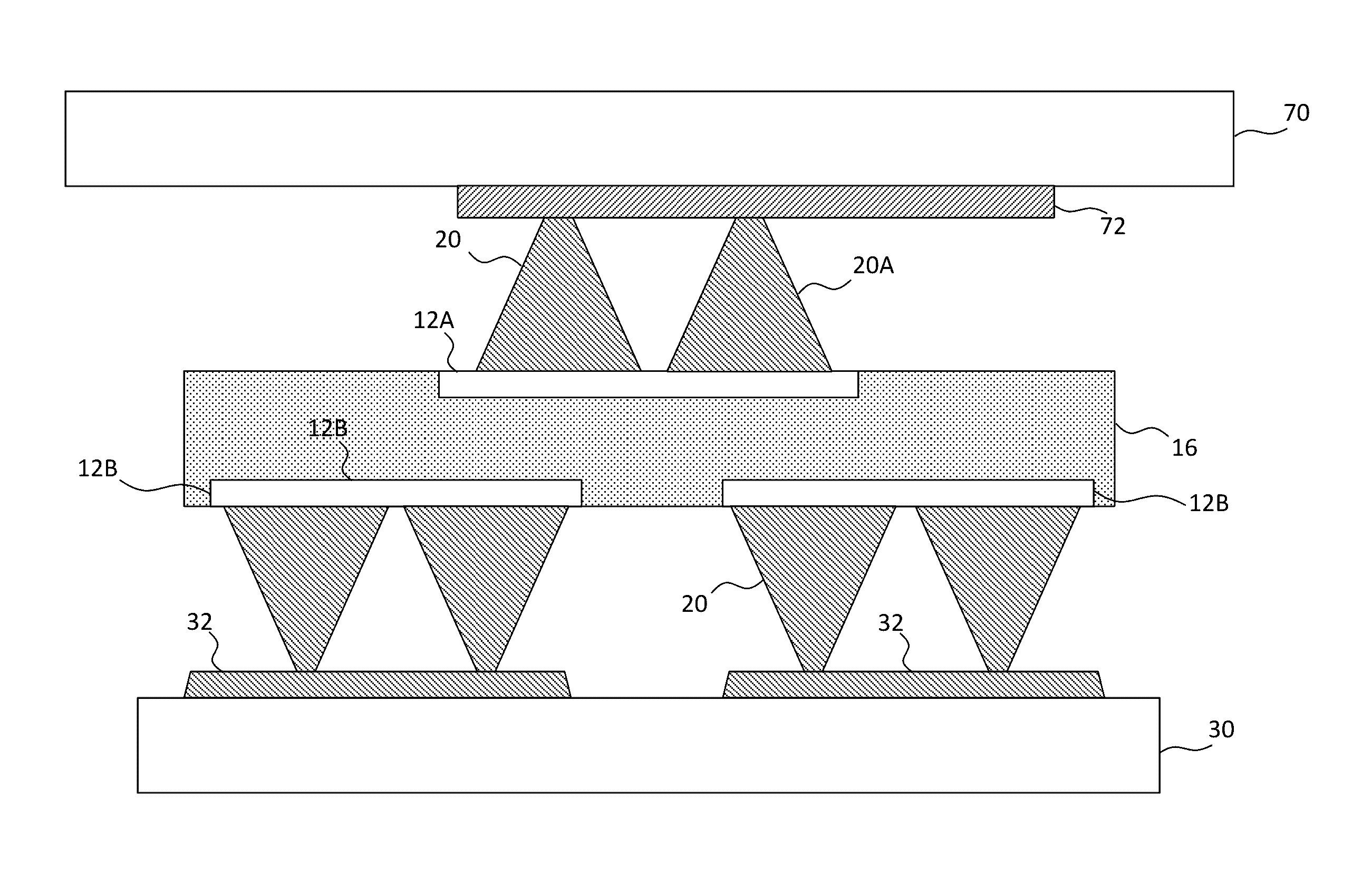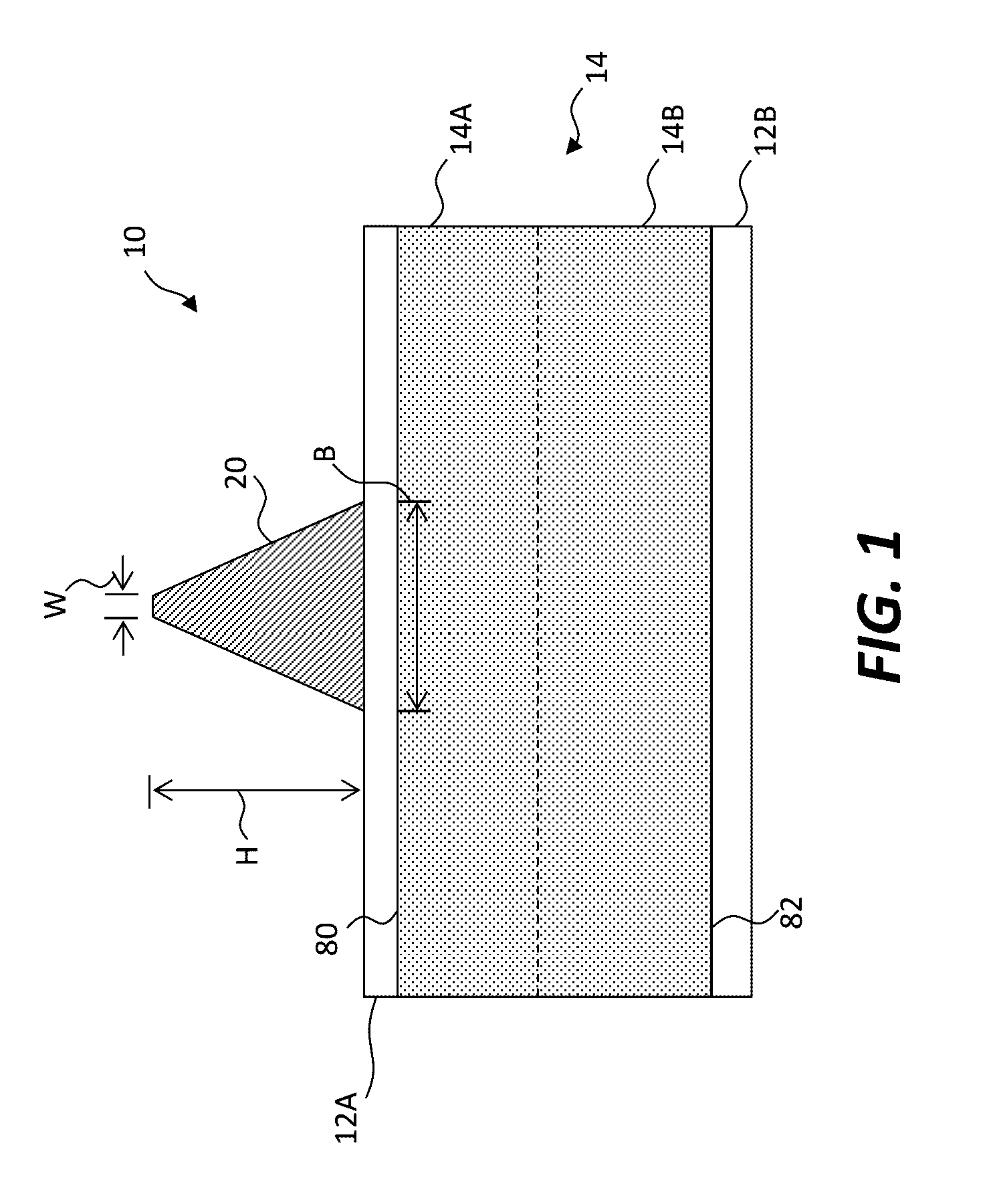Printable component structure with electrical contact
a technology of printed components and electrical contacts, which is applied in the direction of sustainable manufacturing/processing, instruments, and final product manufacturing, etc., can solve the problems of waste of materials, low performance of above-the-line techniques, and low performance of other integrated circuits, so as to achieve simple and inexpensive electrical interconnection process and reduce process steps
- Summary
- Abstract
- Description
- Claims
- Application Information
AI Technical Summary
Benefits of technology
Problems solved by technology
Method used
Image
Examples
Embodiment Construction
[0106]The present invention provides a structure and method for electrically connecting relatively small electrical components such as integrated circuit chiplets to a common electrical conductor in an efficient and cost-effective way. The common electrical conductor can be a ground plane or power plane. Referring to the cross section of FIG. 1, in an embodiment of the present invention, a printable component structure 10 can be a chiplet that includes a semiconductor structure 14 with a top side 80 and a bottom side 82. One or more top electrical contacts 12A are disposed on the top side 80 of the semiconductor structure 14 and one or more bottom electrical contacts 12B are disposed on the bottom side 82 of the semiconductor structure 14. The semiconductor structure 14 can include a semiconductor substrate. One or more electrically conductive spikes 20 are electrically connected to the one or more top electrical contacts 12A. Each spike 20 protrudes from the top side 80 of the semi...
PUM
| Property | Measurement | Unit |
|---|---|---|
| height | aaaaa | aaaaa |
| height | aaaaa | aaaaa |
| height | aaaaa | aaaaa |
Abstract
Description
Claims
Application Information
 Login to View More
Login to View More - R&D
- Intellectual Property
- Life Sciences
- Materials
- Tech Scout
- Unparalleled Data Quality
- Higher Quality Content
- 60% Fewer Hallucinations
Browse by: Latest US Patents, China's latest patents, Technical Efficacy Thesaurus, Application Domain, Technology Topic, Popular Technical Reports.
© 2025 PatSnap. All rights reserved.Legal|Privacy policy|Modern Slavery Act Transparency Statement|Sitemap|About US| Contact US: help@patsnap.com



